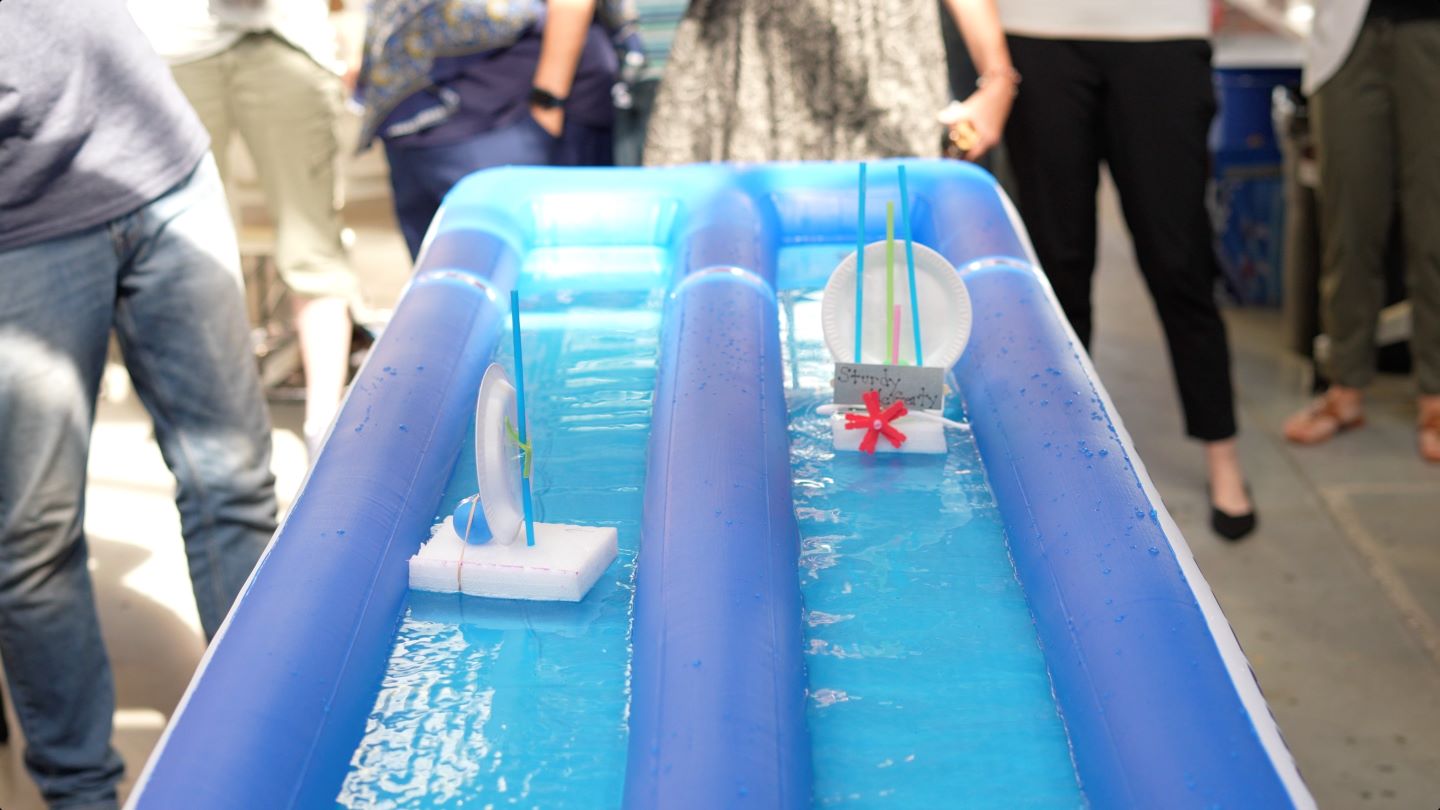
Step 1: Research
Students will discuss how their findings will impact their design. In this stage, students should focus on understanding design criteria. They should understand the relationship between weight and buoyancy, the impact of boat size, and the surface area of their sails.
Step 2: Define
Students will make a design plan for their ideal sailboat. Once they have a plan, introduce design constraints by distributing the limited materials all students will use. Students will make a new plan given these material constraints. After formulating a second plan, students will build their sailboat. Encourage them to learn as they build and iterate on their design as they learn what is possible with the materials at hand.
Step 3: Plan and Prototype
Each team will get two timed trials of their sailboats. The trial with the fastest time will be the official time for that team. The timer should start when the sailboat is released inside the body of water (pool) and end when the boat crosses the line. The team with the fastest time of the whole class will win the design challenge. Between trials, encourage students to talk about what went well and didn’t go well in their first time trial. Students can iterate on their design and make changes in order to have a better time during the second trial.
Step 4: Test
Students will have the opportunity to reflect on their design process. Encourage them to think about the design engineering research process and how thinking about design criteria and constraints before building impacted their final design.
Step 5: Discussion
Alternative Instructions
This activity can also be run as a station without the competition component. Students can have access to as many materials as they want, and need to create a sailboat that meets certain guidelines. Rather than working towards the sailboat that spends the shortest time traveling the distance, younger students may do better with building the sailboat that moves the fastest. Older students can be challenged to make a sailboat that can
Teacher Guide
Student Guide
Project Examples
Have a solution to this challenge you want to share? Take a photo or video of your prototype, post it on social media, and don’t forget to tag us @fluxspace_io






